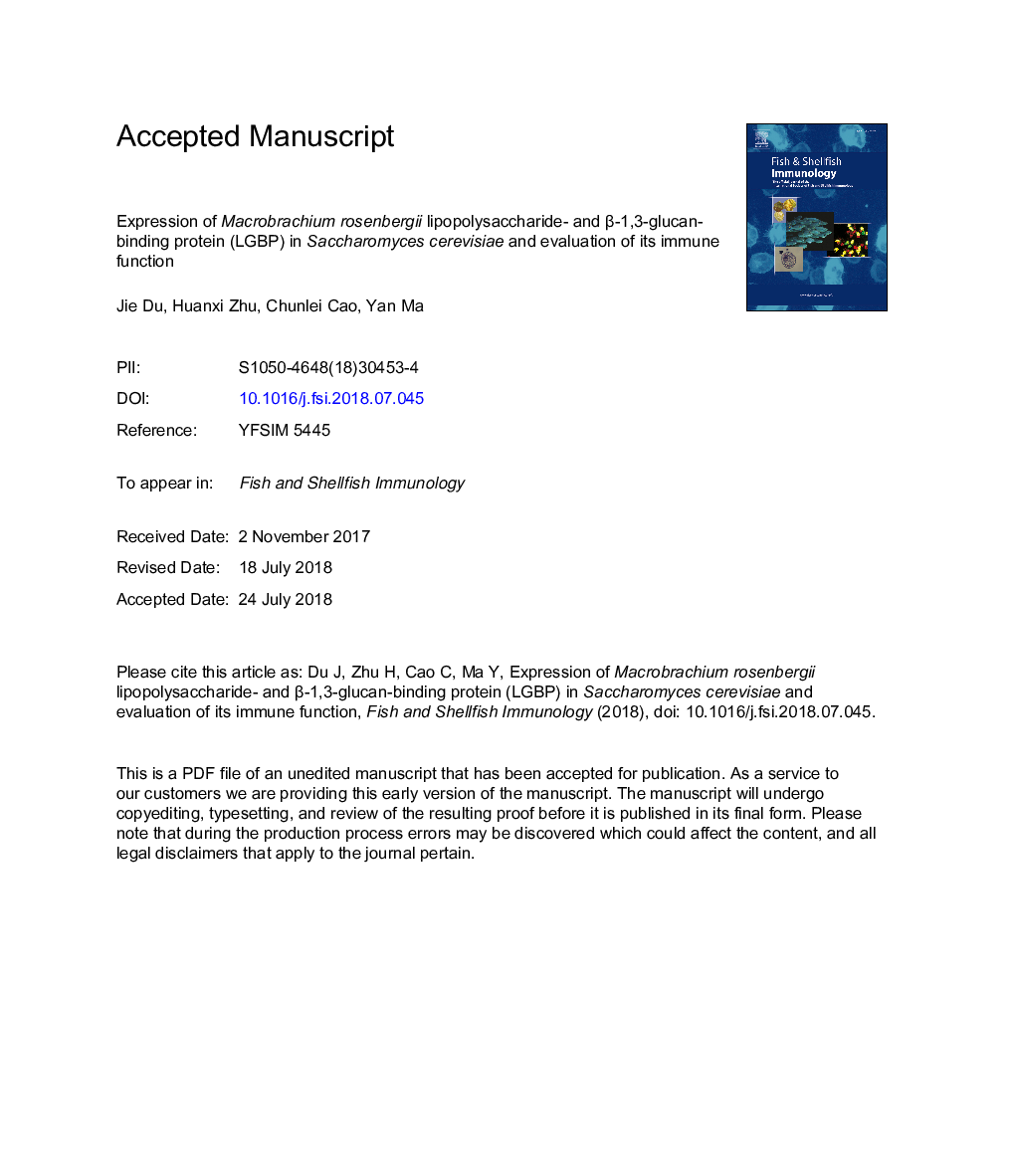| Article ID | Journal | Published Year | Pages | File Type |
|---|---|---|---|---|
| 11263228 | Fish & Shellfish Immunology | 2019 | 32 Pages |
Abstract
Pattern recognition proteins (PRPs) activate the innate immune system in invertebrates, and lipopolysaccharide- and β-1,3-glucan-binding protein (LGBP) is an important PRP with various biological functions. Here, the open reading frame (ORF) of Macrobrachium rosenbergii LGBP (MrLGBP) was cloned into plasmid vector pHAC181, then integrated into downstream of the GAL1 promoter of Saccharomyces cerevisiae strain GAL1-ScRCH1 via homologous recombination, followed by its expression in the yeast eukaryotic system. The resulting recombinant LGBP contained a 3â¯Ãâ¯HA-tag at its C terminus and had a molecular weight of about 45â¯kDa, as evaluated by western blot analysis. Minimum inhibitory concentration (MIC) and minimum bactericidal concentration (MBC) were ranged from 0.340 to 0.802 and 1.189-1.810â¯Î¼M, respectively. The recombinant MrLGBP protein agglutinated almost all tested bacteria except Bacillus thuringiensis and Staphylococcus aureus. These results revealed that this recombinant protein exhibited antimicrobial activity against some Gram-positive and Gram-negative bacteria. M. rosenbergii prawns were fed with the recombinant yeast strain MrLGBP for 1 month and challenged with the most common crustacean pathogen, Vibrio parahaemolyticus. These prawns showed lower mortality and higher enzymatic activity and expression levels of immunity genes than did the control groups. All these results suggest that MrLGBP may play important roles in the innate immunity of crustaceans, and recombinant strain S. cerevisiae MrLGBP may be useful for the development of an effective immune feed additive in the future.
Related Topics
Life Sciences
Agricultural and Biological Sciences
Aquatic Science
Authors
Jie Du, Huanxi Zhu, Chunlei Cao, Yan Ma,
